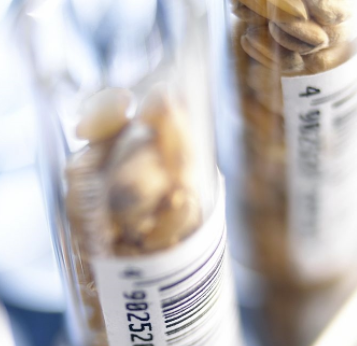Serialization in Pharmaceutical Manufacturing
February 22, 2018

Overview
Grantek recently developed and implemented a serialization system for compliance with the US Drug Supply Chain Security Act (the Act) for a major manufacturer of generic pharmaceuticals. The new system is compliant with the Act and also allows the customer full visibility into their production via integration of the serialization system with their ERP system.
Challenges
One reason the customer selected Grantek for this project was due to a previous vendor being unable to meet the customer’s implementation schedule, which was driven by their production commitments. The other vendor required at least 16 months to implement the necessary updates to their proprietary system for compliance with the Act. That was unacceptable to the customer, so Grantek proposed designing a custom system, using off-the-shelf sensors and components, and completed the project in less than 8 months, including testing and validation.
All pharmaceutical manufacturers are concerned about meeting the compliance dates for enforcement of the Act (which have since been delayed until November 2018).
The Act requires serialization at all levels of packaging, necessitating establishment of a parent-child relationship among serial numbers for bulk packaging, such as shipping pallets, and smaller manufacturing units such as cartons and bundles. The relationship must be maintained down to the lowest packaging level (bottles in this case).
Solutions
Since this customer already held a trusted relationship with Grantek, based on past experience and industry reputation, they chose to proceed with Grantek’s proposed solution. Grantek developed a GAMP lifecycle-compliant system from concept to production and validated it within the 8-month schedule. The project included assisting the client with the development of a detailed user requirement specification. Based on this, Grantek developed the functional requirements specification, system design documentation, system acceptance test procedures, and user manuals for the new system.
The system Grantek developed reads and generates 1D barcodes, 2D DataMatrix codes and performs optical character recognition. The system encodes serial number, lot number, batch, expiry, manufacturing date, manufacturer, quantity and other parameters and prints everything needed on the labels for each level of packaging. The system is recipe-based, meaning it can generate a unique label appropriate for each unit of packaging, for each product being manufactured. Label content, label size, and encoding parameters can be programmed by the facility using the Grantek-developed system. The identifiers are compliant with GS-1 requirements.
The packaging is labeled using 2D DataMatrix codes originating in the facility’s SAP system, and the labeling may contain information such as intended customer, warehouse information, storage instructions, and manufacturing production line, allowing traceability of each packaging unit back to its source and providing all of the required information that can be printed on any type of label.
Grantek designed the system, installed it, integrated it with other factory systems and the ERP system, and assisted in completion of qualification testing, all within the 8-month time frame required by the customer, achieving compliance with the Act ahead of the enforcement schedule. The customer is pleased to have a system built with off-the-shelf components that is easy to maintain and reprogram for production changes. The serialization system is integrated with the facility’s SAP ERP system to maximize efficiency and provide traceability.
For more information on serialization systems, compliance deadlines and Grantek’s pharmaceutical expertise, please consult our serialization whitepaper: https://grantek.com/wp-content/uploads/2018/02/Serialization-WP-Merged-v3.pdf
